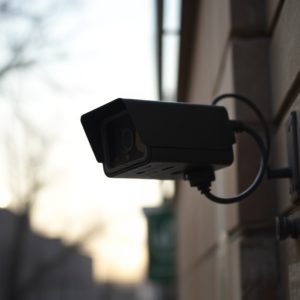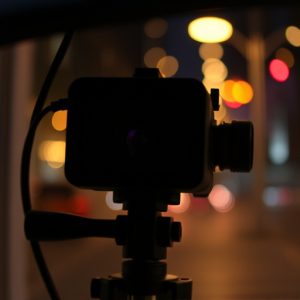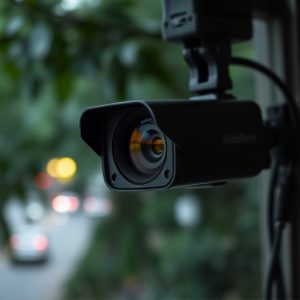Unveiling Covert Spots: Guide to Indoor Wireless Night Vision Cameras
Using wireless night vision security cameras indoors offers advanced surveillance but navigates comp…….
Using wireless night vision security cameras indoors offers advanced surveillance but navigates complex legal and ethical territories, with non-consensual recording being illegal and a breach of privacy. These cameras, leveraging infrared technology and sensitive sensors, provide clear images in low light. Detecting hidden recording devices requires a combination of observation, technological tools like thermal imaging and RF detectors, and knowledge of common hiding places. Strategic placement, reliable power sources, secure connections, regular maintenance, and understanding legal and ethical boundaries are vital for effective and legal use of wireless night vision security cameras indoors.
“Uncover the art of covert recording spot identification with our comprehensive guide. In today’s security-conscious world, understanding the legal and ethical boundaries of hidden surveillance is paramount. This article explores wireless night vision security cameras tailored for indoor applications, offering practical methods and tools to identify secret recording spots. From best deployment practices to maintenance tips, we equip you with the knowledge to navigate this intricate landscape effectively.”
- Understanding the Legalities and Ethical Considerations of Covert Recording
- Types of Wireless Night Vision Security Cameras: Indoor Applications
- Identifying Covert Recording Spots: Practical Methods and Tools
- Best Practices for Deploying and Maintaining Secret Surveillance Systems
Understanding the Legalities and Ethical Considerations of Covert Recording
In many jurisdictions, covert recording, especially in indoor spaces like homes or offices, is a complex legal and ethical terrain. While some situations allow for such recordings—for example, to protect property or gather evidence in cases of suspected criminal activity—unlawful or unauthorized surveillance can lead to serious consequences. It’s crucial to understand the specific laws regarding covert recording in your region. Non-consensual audio or video recording of individuals without their knowledge or permission is often considered a breach of privacy and can be illegal.
Using technology like wireless night vision security cameras indoors raises additional ethical questions. These devices, offering discreet surveillance, might tempt users to record without consent, infringing on personal privacy rights. Ethical considerations demand transparency about the presence of such cameras and clear communication regarding data storage and usage. Legally and ethically navigating covert recording requires a thorough understanding of local regulations and prioritizing respect for individual privacy.
Types of Wireless Night Vision Security Cameras: Indoor Applications
Wireless Night Vision Security Cameras have evolved significantly, offering a range of options for indoor applications. These cameras utilize advanced technology to capture clear images and footage in low-light conditions, enhancing security within homes and businesses. One common type is the infrared (IR) camera, which uses thermal imaging to detect heat signatures, allowing for visibility even in complete darkness. IR cameras are ideal for indoor spaces where natural light is scarce.
Another variety is the digital night vision camera, equipped with sensitive sensors and enhanced image processing algorithms. These cameras can pick up faint light sources, like moonlight or artificial lighting, and amplify it to deliver sharp visuals. Digital models often feature adjustable IR LEDs, enabling users to customize the illumination for specific indoor environments. This flexibility makes them versatile choices for various interior settings, ensuring optimal visibility around the clock.
Identifying Covert Recording Spots: Practical Methods and Tools
Identifying covert recording spots involves a combination of meticulous observation, advanced technology, and a deep understanding of common hiding places. One effective method is to conduct thorough inspections using wireless night vision security cameras indoors. These devices are invaluable tools for detecting hidden cameras or recording devices that might be installed in unsuspecting spaces like office cubicles, meeting rooms, or even private residences. Their infrared capabilities allow for clear visuals in low-light conditions, enabling users to uncover concealed spots.
Additionally, specialized equipment such as thermal imaging cameras and RF (radio frequency) detectors can further aid in the process. Thermal imaging reveals temperature anomalies that might indicate the presence of electronic devices, while RF detectors scan for any wireless signals, helping to pinpoint hidden microphones or recording devices that emit radio transmissions. Combining these practical methods ensures a comprehensive approach to identifying covert recording spots, enhancing privacy and security.
Best Practices for Deploying and Maintaining Secret Surveillance Systems
When deploying and maintaining secret surveillance systems, especially using wireless night vision security cameras indoors, it’s crucial to follow best practices for optimal results. Firstly, ensure discreet placement; hide cameras strategically to avoid detection while capturing clear footage. Secondly, prioritize reliable power sources and secure wireless connections to prevent disruptions or data breaches. Regular maintenance checks are essential; inspect cameras, cables, and sensors for any damage or wear, replacing components as needed to maintain consistent performance.
Additionally, consider the legal implications and ethical considerations surrounding covert recording in indoor spaces. Adhering to privacy laws and obtaining necessary permissions can protect against legal challenges. Transparent communication with occupants, where feasible, helps foster trust while respecting individual privacy rights.
In conclusion, understanding the legal and ethical boundaries surrounding covert recording is paramount. Wireless Night Vision Security Cameras offer a powerful tool for indoor applications, enabling enhanced security and peace of mind. By employing practical methods and tools, individuals can effectively identify potential covert recording spots, ensuring privacy and security within their spaces. Adhering to best practices during deployment and maintenance further fortifies the integrity and effectiveness of secret surveillance systems.


